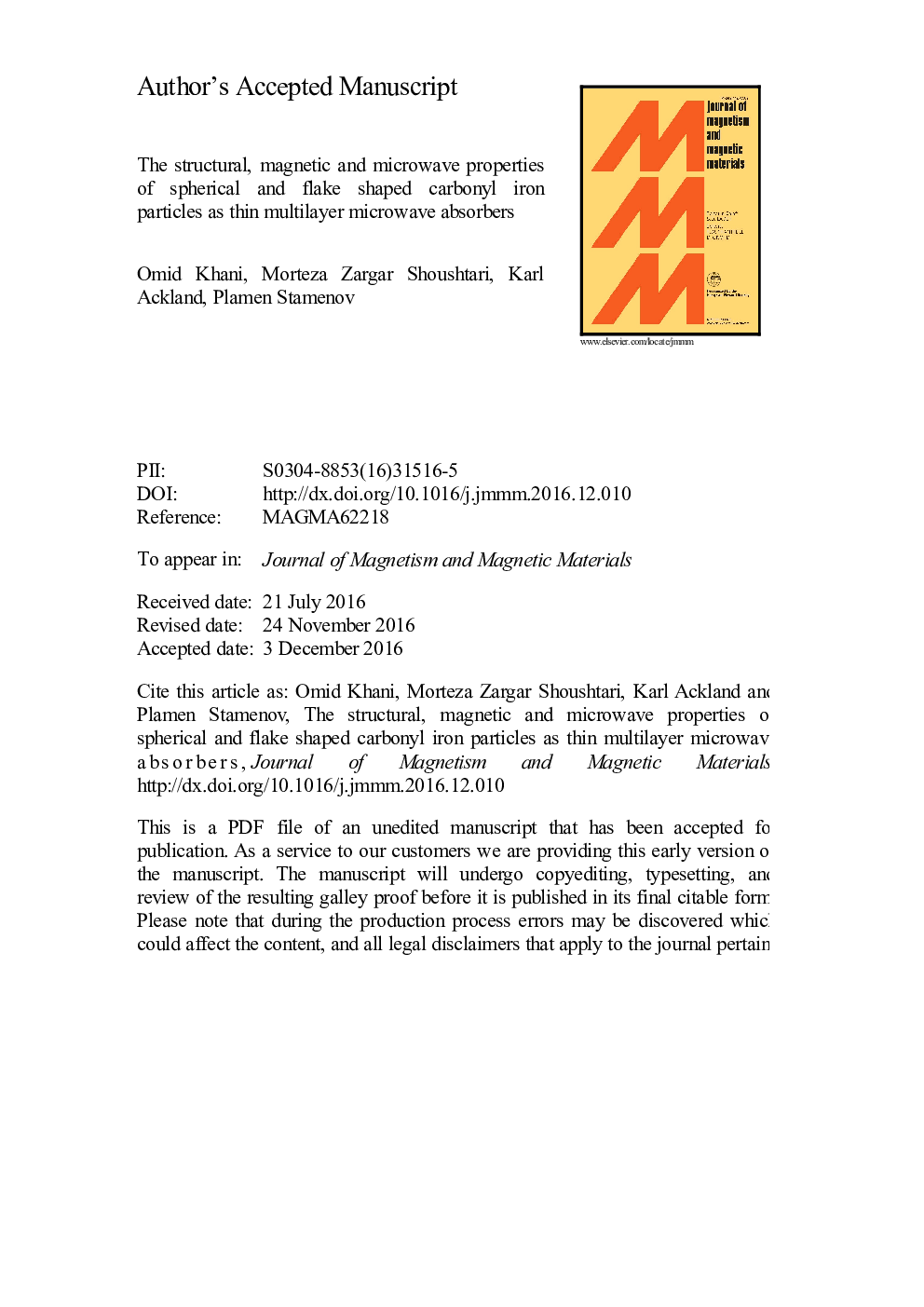| Article ID | Journal | Published Year | Pages | File Type |
|---|---|---|---|---|
| 5490541 | Journal of Magnetism and Magnetic Materials | 2017 | 30 Pages |
Abstract
An increase in microwave permeability is a prerequisite for reducing the thickness of radar absorber coatings. The aim of this paper is to increase the magnetic loss of commercial carbonyl iron particles for fabricating wideband microwave absorbers with a multilayer structure. For this purpose, carbonyl iron particles were milled and their static and dynamic magnetic properties were studied before and after milling. A distinct morphological change from spherical to flake-like particles is measured with increased milling time, whereas no distinct changes in magnetic properties are measured with increased milling time. The imaginary part of the permeability (µ״) of the milled carbonyl iron particles increased from 1.23 to 1.88 and showed a very broad peak over the entire frequency range 1-18 GHz. The experimental results were modeled using the Rousselle effective medium theory (EMT) in the Neo formulation. The theoretical predictions showed good agreement with the experimental results. Two layer absorbers were designed according to the measured microwave parameters and the multilayer design. The results revealed that a thin multilayer with a thickness of 1.75 mm can effectively absorb microwaves in both the entire X and Ku frequency bands. The results suggest that microwave absorbers with excellent absorption properties could be mass-produced, using commercial carbonyl iron particles.
Keywords
Related Topics
Physical Sciences and Engineering
Physics and Astronomy
Condensed Matter Physics
Authors
Omid Khani, Morteza Zargar Shoushtari, Karl Ackland, Plamen Stamenov,
